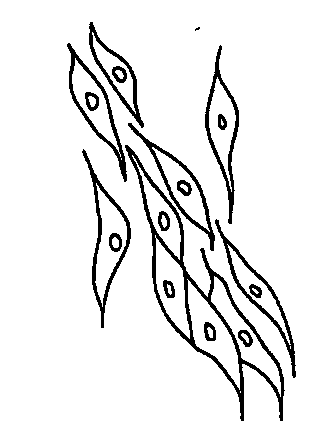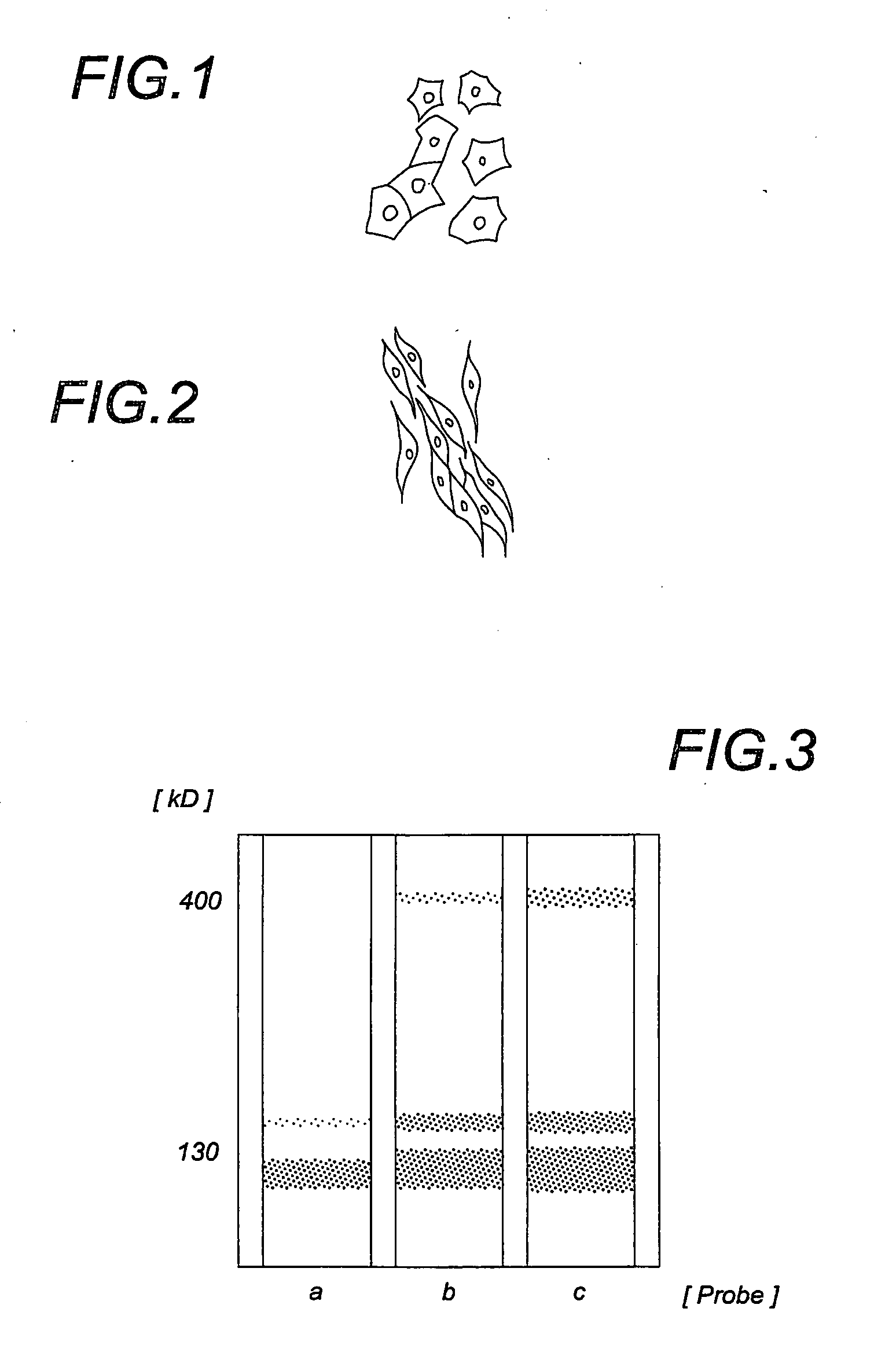Method for cultivating tendon cells from pluripotent cells of mesenchymal origin
a technology of mesenchymal origin and tendon cells, which is applied in the field of cultivating tendon cells from nonembryonic pluripotent cells of mesenchymal origin, can solve the problem that the activation associated with this activity is not sufficient for a promising transplantation
- Summary
- Abstract
- Description
- Claims
- Application Information
AI Technical Summary
Problems solved by technology
Method used
Image
Examples
Embodiment Construction
[0015]As can be seen from FIG. 1, the cells show a polygonal structure before their treatment with ascorbic-2-phosphate. As a result of the treatment with ascorbic-2-phosphate, the fibroblastic structures indicated in FIG. 2 are achieved such as are required for tendon cells without transforming growth structures needing to be used for this purpose, so that the cells are not subjected to any genetic treatment.
[0016]FIG. 3 shows schematically the result of a Western Blot analysis for the collagen production, wherein sample a relates to a cell culture without any treatment with ascorbic-2-phosphate, sample b relates to a cell culture with treatment by ascorbic-2-phosphate and sample c relates to a cell culture with treatment by ascorbic-2-phosphate under hyperosmolar conditions. A significant increase in the secretion of type I collagen can be seen for samples b and c, this being apparent from the double band in the area of the molecular mass of 130 kD. Compared to sample b, sample c ...
PUM
| Property | Measurement | Unit |
|---|---|---|
| concentration | aaaaa | aaaaa |
| pH | aaaaa | aaaaa |
| time | aaaaa | aaaaa |
Abstract
Description
Claims
Application Information
 Login to View More
Login to View More - R&D
- Intellectual Property
- Life Sciences
- Materials
- Tech Scout
- Unparalleled Data Quality
- Higher Quality Content
- 60% Fewer Hallucinations
Browse by: Latest US Patents, China's latest patents, Technical Efficacy Thesaurus, Application Domain, Technology Topic, Popular Technical Reports.
© 2025 PatSnap. All rights reserved.Legal|Privacy policy|Modern Slavery Act Transparency Statement|Sitemap|About US| Contact US: help@patsnap.com


